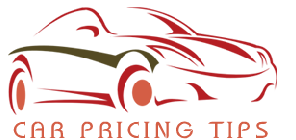[vc_row][vc_column][stm_post_fullwidth_info css=”.vc_custom_1469465317365{margin-top: -36px !important;margin-bottom: 75px !important;}”][/vc_column][/vc_row][vc_row][vc_column width=”2/3″][vc_custom_heading text=”Terms Explained: Dealer Hold Back, Rebates, Dealer Cash, Dealer Invoice and Dealer Incentives” font_container=”tag:h3|text_align:left” use_theme_fonts=”yes”][vc_separator color=”black” border_width=”4″][vc_column_text]
Buying a new car can become very confusing at times. This is mostly because the car dealers use terms that an average car buyer might not understand and oftentimes they even end up making the wrong choice. So in order to ensure that you make the right deal and make an informed choice, we will help you understand the various dealer terminologies.
- Dealer Hold Back
The dealer hold back is an amount received by the car dealers from the car manufacturer for every new car sold. The manufacturers pay this amount to the car dealers, since they have to depend on the dealerships to keep their assembly lines running and maintain a steady flow of cash. The dealer hold back is a certain percentage of the invoice price or the Manufacturer’s Suggested Retail Price (MSRP). The amount offered differs with each manufacturer. Ideally the dealers get two percent of the invoice price, however, it can range from zero to three percent. - Rebates
Rebate is the amount of money paid by the car dealership to the car buyer on completion of a vehicle purchase. This rebate can be used in two ways – either it can be taken as cash or it can be used as the down payment for the new car. However, car buyers must remember that the rebate taxable. The rebate is seen as an income, so whether you take a cash rebate or use it as a down payment, you will need to pay the taxes. - Dealer Cash
Dealer cash is a manufacturer incentive that is designed to allow special discounts on a new car at the sole discretion of the dealers. This is much different from dealer holdback, so the two must not be confused. The dealers can choose to pass on (a part or the entire) the discount to the car buyers or keep it with them to improve profit margins.
By offering a discount, the manufacturers help the dealers to sell more cars. Unlike traditional discounts, the dealer cash lowers the sale price of the new car before the sale tax is implied. Thus it can lower the sale price considerably, thus attracting more buyers. - Dealer Invoice
Dealer invoice is the amount paid by the car dealership to the car manufacturer. This amount includes the price, factory charges and price of other accessories. This amount goes to the factory. However, due to rebates, holdback and other offers, the actual cost of the car (which has to be paid by the dealer) becomes much lower, allowing them to make higher profits. - Dealer Incentives
Dealer incentives are referred to as factory-to-dealer incentives that reduce the dealer’s overall cost to buy a vehicle from the factory. These incentives are offered by the manufacturers, on a regional basis in order to generate more sales on specific models. These are also referred to as spiffs. The dealer incentives can encourage dealers to move slow selling stocks. This is because many manufacturer offer dealer incentive when a certain sales target is fulfilled.
So, now when you visit a car dealership, you will be in a better position to understand what the dealers say and will also be able to defend when they try to mislead you.
[/vc_column_text][stm_post_meta_bottom][stm_post_author_box][stm_post_comments][/vc_column][vc_column width=”1/3″][stm_sidebar sidebar=”651″][/vc_column][/vc_row]
